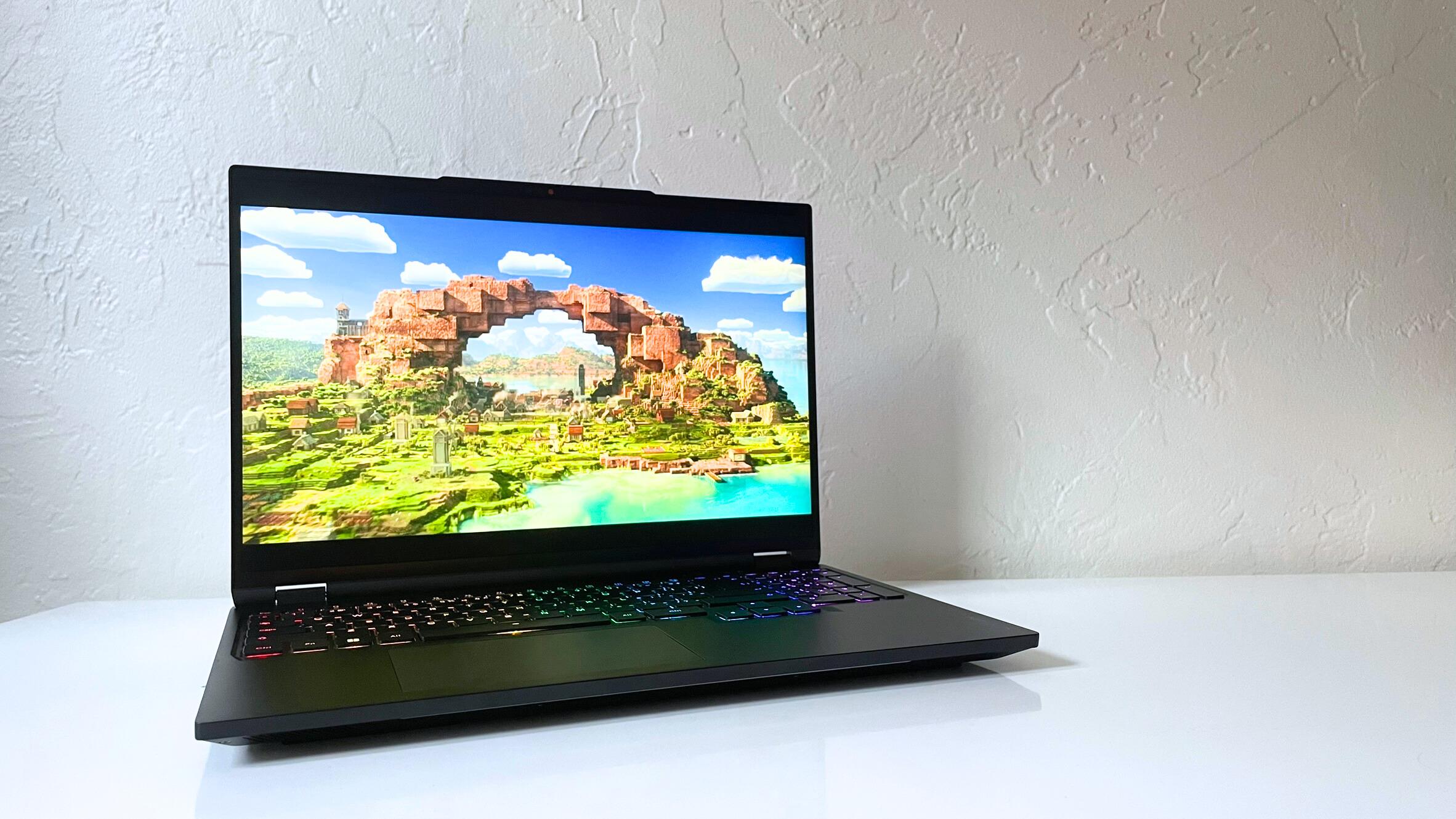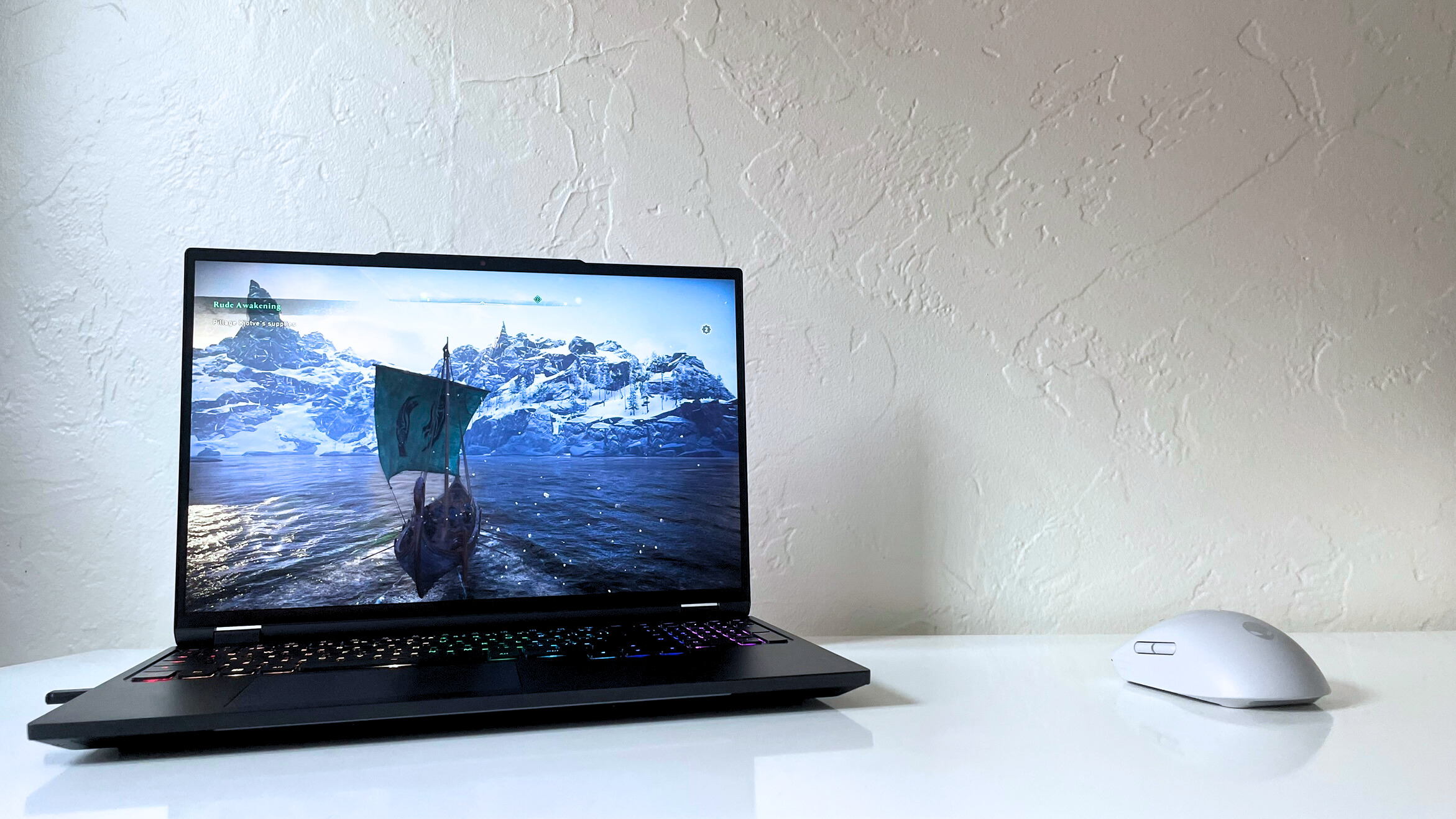Origin EON16-X vs Razer Blade 16: Which powerhouse gaming laptop is right for you?
The Origin EON16-X and Razer Blade 16 are both powerful, but one is a better deal for your hard-earned money

The Origin EON16-X and Razer Blade 16 are both premium powerhouse gaming laptops, but which provides the best performance for your money?
Some critical differences set one apart as the better bang for your buck.
If you want the best gaming performance, you're most likely looking at gaming laptops in the $2,000 to $4,000 range. The Origin EON16-X and Razer Blade 16 are right in the middle of this price bracket, and both feature nearly identical specs. These two 16-inch gaming laptops each have much to offer, from sleek designs to impressive performance.
However, some critical differences set one apart as the better bang for your buck. When spending $3,000 or more on a top gaming laptop, you have to pay attention to the details to ensure you're getting your money's worth.
Here's an in-depth look at how the Origin EON16-X and the Razer Blade 16 compare and which one is the champion.
Origin EON16-X vs Razer Blade 16: Price and configurations
| Spec | Origin EON16-X | Razer Blade 16 |
|---|---|---|
| CPU | Intel Core i9-14900HX | Intel Core i9-14900HX |
| GPU | NVIDIA GeForce RTX 4090 laptop GPU | NVIDIA GeForce RTX 4090 laptop GPU |
| RAM | 32GB | 32GB |
| Storage | 1TB system storage, 1TB additional storage | 2TB |
| Display | 16-inch 2560x1600 240Hz refresh rate | 16-inch OLED 2560x1600 240Hz refresh rate |
| Battery life | 4:28 (1:09 gaming) | 4:41 (1:37 gaming) |
| Dimensions | 14.04 x 9.65 X 1.05 inches | 14 x 9.6 x 0.87 inches |
| Weight | 5.5 pounds | 5.3 pounds |
| Price | $3,620 (starting at $2,915) | $4,199 (starting at $2,999) |
One look at the specs for the Origin EON16-X and Razer Blade 16 is enough to notice they are very similar laptops. They have the exact same CPU and GPU, the same amount of RAM, and the same amount of storage. Both laptops also have similar dimensions and weight.
What doesn't match is the price. The Razer Blade 16 costs $579 more (comparing both matching review configurations). So, with the Blade, you're paying significantly more for the same specs. The Blade has an OLED display, but that's not worth the nearly $600 price gap.
Additionally, Origin offers more configuration flexibility. You can customize how much storage you have, split it between multiple SSDs, and even select the specific SSD model (Corsair and Samsung options are available). In comparison, Razer only allows you to select the amount of storage.
Sign up to receive The Snapshot, a free special dispatch from Laptop Mag, in your inbox.
As a result, the Origin EON16-X handily wins this category.
Winner: Origin EON16-X
Origin EON16-X vs Razer Blade 16: Design

While the Origin EON16-X and Razer Blade 16 may be similar on the inside, they couldn't be more different on the outside.
While the Origin EON16-X and Razer Blade 16 may be similar on the inside, they couldn't be more different on the outside.
The Razer Blade 16 has a streamlined, minimalistic design that looks more like a MacBook than a typical gaming laptop. The matte aluminum chassis only comes in two colors: Black and Mercury, which is a light gray.
In comparison, the Origin EON16-X has a plastic chassis that's mainly black with an option to have a custom design printed on the lid. Origins offers over a dozen pre-made designs you can choose for $29 extra or you can create a personalized design for $140 extra.
If you want a more colorful, unique laptop, the EON16-X has a clear advantage. On the other end of the spectrum, if you want a gaming laptop that doesn't look like a gaming laptop, the Razer Blade 16 is the winner. So, this category is highly dependent on personal taste. However, the EON16-X has a slight edge overall by having more design options available.
Winner: Origin EON16-X
Origin EON16-X vs Razer Blade 16: Display

I was expecting the Razer Blade 16 to handily defeat the EON16-X in the display category since our review configuration has an OLED display. However, our benchmark results do not show that.
The Blade 16 scored less than two points higher than the EON16-X in our DCI-P3 color gamut test. Both laptops reproduced less than 80% of the color gamut, which is disappointing.
The EON16-X outperformed the Blade 16 in our brightness tests with a significantly higher average brightness of 528.8 nits compared to the Blade's 378 nits. So, the EON16-X wins this category, despite not having an OLED display.
Winner: Origin EON16-X
| Laptop | DCI-P3 color gamut | Average brightness (SDR) |
|---|---|---|
| Origin EON16-X | 76.6% | 528.8 nits |
| Razer Blade 16 | 78% | 378 nits |
Origin EON16-X vs Razer Blade 16: Performance

Since the Origin EON16-X and the Razer Blade 16 have almost identical specs, it's no surprise that their performance benchmark scores were close across the board. However, one laptop has an edge.
The EON16-X slightly outscored the Blade 16 in the Geekbench 6 single-core test by a margin of just 80 points. The Blade 16 has the lead in the Geekbench 6 multi-core test, outpacing the EON16-X by 1,573. The Blade 16 also completed the HandBrake video transcoding benchmark test 28 seconds faster than the EON16-X.
| Laptop | Geekbench 6 single-core | Geekbench 6 multi-core | HandBrake time |
|---|---|---|---|
| Origin EON16-X | 2,964 | 15,888 | 3:16 |
| Razer Blade 16 | 2,884 | 17,461 | 2:48 |
Both laptops offer strong performance across the board and none of the gaps between their scores are drastic. However, the Blade 16 has an edge in two out of three of our main performance benchmark tests, so it narrowly wins this category.
Winner: Razer Blade 16
Origin EON16-X vs Razer Blade 16: Graphics and gaming

The Origin EON16-X and Razer Blade 16 have the exact same processor and GPU, so their results on our gaming benchmark tests were fairly similar.
The Blade 16 had an edge on the 3DMark Fire Strike graphics benchmark, where it scored 35,179, somewhat higher than the Origin EON16-X, which scored 33,781. The results were similarly tight in our first pair of game benchmarks:
| Laptop | 3DMark Fire Strike | Assassin's Creed: Mirage (1080p) | Assassin's Creed: Mirage (Native) | Cyberpunk 2077 (1080p) | Cyberpunk 2077 (Native) |
|---|---|---|---|---|---|
| Origin EON16-X | 33,781 | 145 fps | 114 fps | 65 fps | 36.8 fps |
| Razer Blade 16 | 35,179 | 130 fps | 118 fps | 63 fps | 35 fps |
These results are so close that this category is nearly a toss-up. You will probably get effectively the same gaming performance on either laptop.
However, when we look at a few more in-game benchmarks, the Razer Blade 16 emerges with a slight lead. Specifically, the Blade 16 seems to handle full native resolution (2560x1600) better than the EON16-X.
The Blade 16 still has higher frame rates in 1080p, but the average frame rate doesn't seem to drop as much when switching to native resolution compared to the EON16-X.
| Laptop | Shadow of the Tomb Raider (1080p) | Shadow of the Tomb Raider (native) | Total War: Warhammer III (1080p) | Total War: Warhammer III (native) |
|---|---|---|---|---|
| Origin EON16-X | 177 fps | 112 fps | 157 fps | 100 fps |
| Razer Blade 16 | 164 fps | 120 fps | 154 fps | 104 fps |
While this category is extremely close, the Razer Blade 16's more consistent average frame rates in our game benchmarks give it a slight lead.
Winner: Razer Blade 16
Origin EON16-X vs Razer Blade 16: Battery life

Gaming laptops may be powerful, but they frequently struggle with battery life. The Razer Blade 16 and Origin EON16-X are not exceptions. Both came in well under 8 hours in our web surfing battery life tests and under 2 hours in the gaming battery life test. However, the Razer Blade 16 lasted a little bit longer in each test, so it narrowly wins this category.
Winner: Razer Blade 16
| Laptop | Battery life (web surfing) | Battery life (gaming) |
|---|---|---|
| Origin EON16-X | 4:28 | 1:09 |
| Razer Blade 16 | 4:41 | 1:37 |
Origin EON16-X vs Razer Blade 16: Overall winner

The Origin EON16-X and Razer Blade 16 are both powerful gaming laptops, but one is a better deal: the Origin EON16-X.
If you want a gaming laptop with a more minimalistic design and an OLED display, the Blade 16 may be worth the extra $579.
While the Razer Blade 16 has a slight lead in overall performance, gaming performance, and battery life, it costs almost $600 more for the same specs as the EON16-X. The margin between the two laptops' scores is incredibly narrow and isn't worth the higher price of the Blade 16, at least not for most gamers.
If you want a gaming laptop with a more minimalistic design and an OLED display, the Blade 16 may be worth the extra $579. However, if you want the best value for your money, the EON16-X offers virtually the same performance across the board and saves you several hundred dollars.
You can also visit our guide to the best gaming laptops to compare these two gaming powerhouses to more alternatives before making your final pick.
More from Laptop Mag
- The 9 most important factors for buying a gaming laptop
- I review gaming laptops for a living, and one major feature is less important than you think
- Buying a gaming laptop? This is how much storage you really need

Stevie Bonifield is a freelance tech journalist who has written for PC Gamer, Tom's Guide, and Laptop Mag on everything from gaming to smartwatches. Outside of writing, Stevie loves indie games, TTRPGs, and building way too many custom keyboards.









